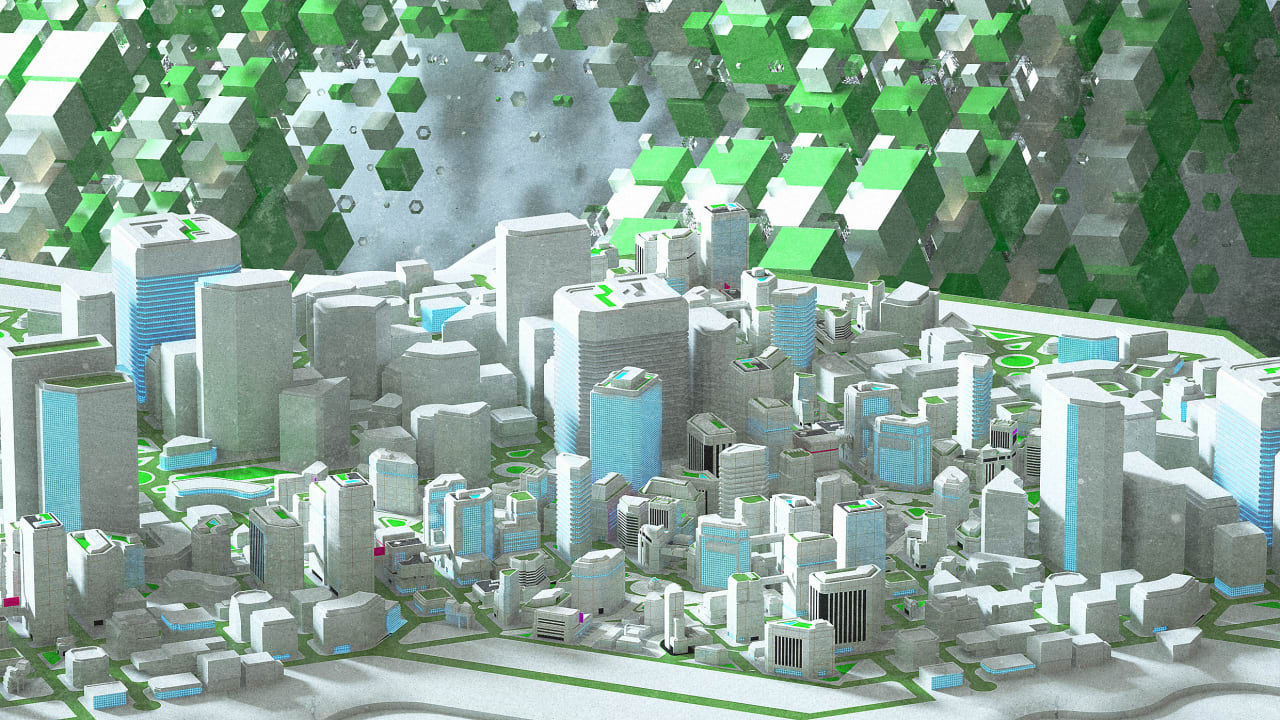
Even with Earth Day in the rearview mirror, it’s still clear that the fight to counter the climate crisis will be won or lost in the world’s cities—and the innovative use of emerging technologies is one of our most powerful tools.
Cities occupy 3% of the world’s land but use 60% to 80% of energy consumption. Cities also emit 75% of the world’s carbon. This problem will intensify as urban populations expand in the coming years: Urban emissions could double by 2050.
How can we mitigate this? The answers lie in lessons we’re learning today as smart cities analyze vast amounts of data on traffic patterns, energy use, air and water quality, greenhouse gas emissions, and more. This analysis generates insights that inform municipal decisions and policies from Seoul to Oslo to New York.
Communities around the world are adopting myriad strategies to advance sustainability—renewable energy and waste reduction projects, energy efficiency and green infrastructure initiatives, water conservation, and enhanced public transportation. We can accomplish much more as we accelerate the use of emerging technologies.
Advances in the internet-of-things (IoT), data analytics, and artificial intelligence (AI) are driving these efforts, which reflects a larger trend in which the convergence of data and these technologies is propelling innovation across many industry sectors.
Emerging, converging technologies
Smart cities use IoT sensors to collect data from multiple sources and big data analytics to unearth patterns and trends that shape their priorities and responses and advance sustainability goals. AI and machine learning (ML)can assess the data to find ways to optimize energy use in buildings and transportation systems. They can also reduce emissions and minimize waste, while predicting maintenance needs and improving the lifespan of infrastructure. For example:
- Data from smart meters in residential, commercial, and industrial buildings and from utilities and renewable energy sources is used in many ways. It can optimize energy use and integrate renewable energy into smart grids, and also manage demand-response systems.
- Traffic cameras and global positioning systems in vehicles and public transport generate information that shows ways to improve traffic flow and reduce congestion and emissions.
- Sensors in waste collection bins and data from waste management facilities can optimize waste collection routes. They can also manage recycling programs and reduce landfill use.
- Smart water meters and sensors in water distribution and sewage systems can detect leaks, manage water resources, and ensure sustainable water use.
- Geospatial data can inform policies designed to preserve natural areas—particularly important given the adverse impact heatwaves can have on cities.
- Sensors and building management systems monitoring energy, water use, and structural health can enhance the building’s energy efficiency. They can also plan maintenance and ensure sustainable construction practices.
Use cases around the globe
Toronto uses IoT sensors, AI, and data analytics to enhance energy efficiency and sustainability. The city implements smart building technologies and energy management systems to optimize energy use in public and private buildings and reduce greenhouse gas emissions, showcasing its commitment to using emerging tech.
In another example, Singapore’s technology-driven climate action—including electronic road pricing to mitigate congestion—has enhanced transportation systems, public services, and environmental management. The city’s sophisticated use of technology allows for real-time data-driven decision-making while offering predictive maintenance of urban infrastructure and efficient resource allocation.
Buenos Aires has also made progress in addressing the climate crisis with smart urban solutions like IoT-based flood warning systems and intelligent public lighting, which have improved energy efficiency and reduced carbon emissions. In addition, the city leverages data analytics for effective waste management and to enhance the efficiency of its public transport system, contributing to a decrease in the city’s overall environmental impact.
A path forward
While Earth Day is a compelling reminder of our urban centers’ pivotal role in the climate narrative, the initiatives need to happen all year. The journey towards sustainable cities hinges on collaboration—among governments, businesses, technologists, and citizens worldwide—to foster environments where innovation thrives.
Use the inspiration from Earth Day to amplify our efforts. Engage with your community. Challenge local leaders. Advocate for smart technologies that pave the way to sustainability.
Looking ahead, we stand on the cusp of technological breakthroughs that promise to redefine our approach to urban living. From advancements in AI and IoT to new frontiers in renewable energy, the potential for creating resilient, efficient cities is boundless. Let’s commit to inclusivity as we navigate this journey to ensure our solutions are adaptable and beneficial across diverse global contexts.
Let’s also champion transparency and responsible standards in deploying these technologies. By developing and adhering to clear success metrics, cities can track their progress. They can also share insights and collectively evolve toward a sustainable future.
Together, we can harness the power of technology to transform our cities into bastions of sustainability and resilience. The path forward is collaborative, innovative, and most importantly, achievable.
Ken Moore is the chief innovation officer at Mastercard and expert-in-residence at Harvard Innovation Labs.


Zita boo
We’re waiting